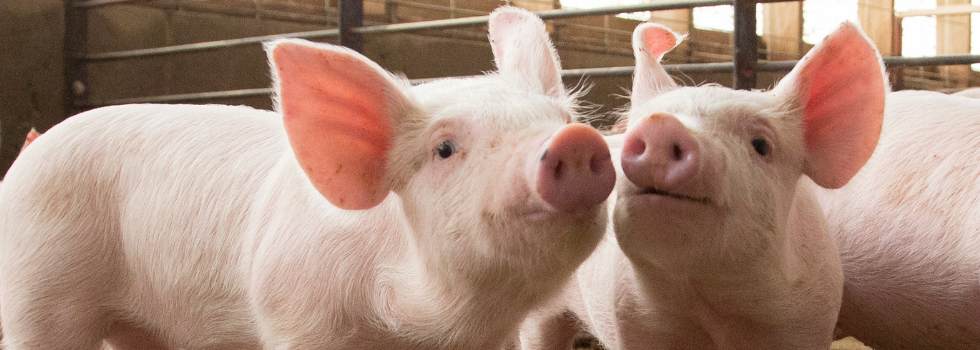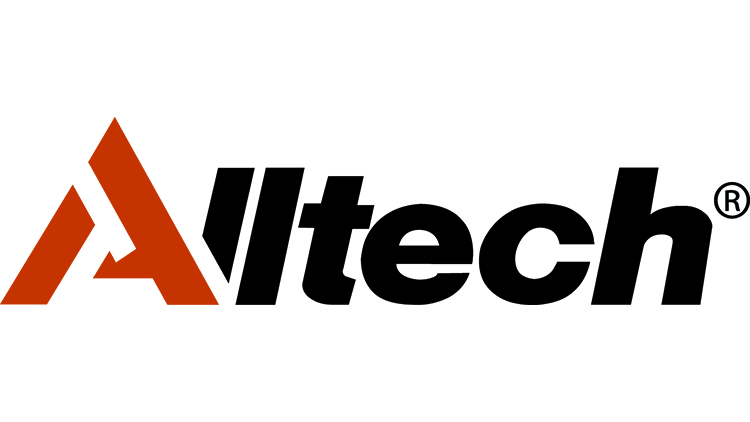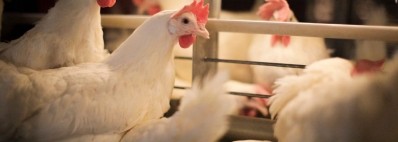Promotional Features
Zinc oxide-free pig production: How removing ZnO can lead to healthier piglets
Dr. Hazel Rooney
Alltech Gut Health Management
Introduction
As the upcoming ban on zinc oxide (ZnO) in the European Union fast approaches, transforming how pig producers achieve healthy piglets and optimal growth performance is now more critical than ever. This article aims to discuss the rationale behind the current widespread use of ZnO in piglet feeds, the underlying environmental and health concerns that have prompted the impending ban and several nutritional and management factors designed to help producers alleviate post-weaning diarrhoea (PWD) in piglets and reduce ZnO utilisation.
The use of zinc oxide to control post-weaning diarrhoea
Before discussing how EU pig producers can successfully rear their pigs in the absence of ZnO, it is important to recognise why high levels of ZnO are consistently used to prevent and control PWD in newly weaned piglets. Weaning represents one of the most stressful and sudden events in modern swine production. Pigs are typically weaned at 21–28 days of age and, during this key life stage, they experience myriad stress factors, ranging from sudden dietary and environmental changes (e.g., substituting sow milk for a dry, pelleted, predominantly vegetable-based diet and moving to new accommodation with different housing conditions) to physiological factors (e.g., abrupt separation from the sow, mixing with unfamiliar pigs, handling and transportation). These factors combined have detrimental effects on the gastrointestinal tract and immune system of piglets, which subsequently contributes to poor growth performance and increased susceptibility to PWD.
Enterotoxigenic Escherichia coli (E. coli) is the main causative agent of PWD. For a long time, pig producers have relied heavily on using therapeutic levels of ZnO in pre-starter and starter feeds (2,000–2,500 ppm or higher), as it was shown to be an effective and relatively low-cost strategy for controlling E. coli infections and preventing PWD. Consequently, pig growth performance and feed intake also improved in the first few weeks after weaning. Despite extensive research in this area, the exact mode of action of ZnO against PWD in piglets is still not fully understood. However, it is hypothesised to be linked to an important improvement in intestinal morphology, namely higher villi:crypt ratio, reduced intestinal permeability and increased nutrient absorption.
What pig producers need to know about the upcoming ban on zinc oxide
Although the use of pharmacological levels of ZnO has been standard practice in the swine industry for controlling pathogenic infections and preventing PWD, it is now apparent that this is contributing to the spread of antimicrobial resistance, in addition to having a negative environmental impact. As such, the EU has decided to ban the utilisation of ZnO at medicinal doses, starting from June 2022. Other pig producing countries around the globe also look to follow suit. For example, Canada is working toward imposing restrictions that will see the authorised level of ZnO in piglet feeds decreased to nutritional levels of 350 ppm.
Pig producers should be interested to know that there are several benefits attributed to moving toward ZnO-free piglet production, some of which include:
- Reduced environmental pollution
- Less antimicrobial resistance
- Increased piglet health and performance by preventing zinc toxicity
- Increased dietary phytase efficiency
- Contribution to a more stable microbial composition of piglets during the early post-weaning period
Alternative solutions to zinc oxide
Pig producers must now seek alternative solutions to manage PWD and safeguard profitable pig production in a post-ZnO era. As most of us are now aware, there is no single antidote to replace ZnO. Instead, the swine industry needs to adopt a holistic approach (see Figure 1) that incorporates a combination of optimal nutritional approaches and management and health practices to help mitigate PWD and reduce ZnO reliance. Such strategies can include:
Figure 1: A holistic approach to achieving optimal pig performance without the use of therapeutic levels of zinc oxide
Nutrition:
- Feeding lower crude protein diets to decrease the amount of undigested protein reaching the large intestine, thus reducing the incidence of PWD and improving intestinal health
- Increasing the dietary fibre level in the post-weaning diet to reduce E. coli shedding and the retention time of digesta along the gastrointestinal tract
- Utilisation of organic acids around weaning has been shown to be an effective approach to controlling PWD symptoms and supporting piglet growth, which is credited to their strong antimicrobial properties
Management:
- Ensure piglets have a sufficient intake of good-quality colostrum (i.e., rich in immunoglobulins) to build their immune system and reduce the susceptibility to infection
- Provision of creep feed to litters from 4–10 days of age to reach the recognition effect of solid feed at weaning and reduce weaning stress by preparing the piglet’s gut to digest solid feed efficiently
- Increase the age and weight of pigs at weaning so that they are better able to cope with the weaning transition (i.e., higher feed intakes and lower mortality)
- Provide pigs with unlimited and unobstructed access to clean, fresh water at the recommended water flow rate of 0.5–1.0 litres per minute
Health:
- Implement strict biosecurity protocols to manage bacterial infections (e.g., operate a strict all-in-all-out policy, never mix pigs from different groups or stages, sanitise trucks and vehicles before entering and leaving the farm)
- Vaccination against enterotoxigenic E. coli is an effective strategy for reducing the incidence of PWD and, subsequently, increasing herd immunity
- Prevent dirty environmental conditions to decrease the proliferation of bacteria in pen and feeder spaces by adhering to stringent washing and disinfectant protocols between each batch of pigs
The Alltech Seed, Feed, Weed programme
Achieving a healthy gut with a suitable microbial population in place will maximise the health and lifetime performance of piglets and, concurrently, the producer’s profitability. Therefore, natural nutritional strategies that promote gut health and development in young pigs without ZnO are gaining considerable interest. Monogastric gut health is one of Alltech’s core competencies, and, over the last 40 years, Alltech has designed several gut health management programmes that focus on early life nutrition to support lifetime pig performance. The Seed, Feed, Weed (SFW) concept is one such programme that is designed to modify the gut microbial population, establishing more diverse and favourable microbial populations as soon as possible after birth. At Alltech, we work with pig producers to implement the SFW programme to give piglets the best start in life by:
- Promoting favourable microbial communities in the gut, which will positively impact the growth and health of pigs later
- Optimising gut structures, resulting in effective nutrient absorption
- Supporting the immune system
The SFW programme incorporates natural feed materials, such as Actigen (Alltech), that are proven to help maintain a healthy gut and support the normalising of gut microflora in both sows and piglets. Maternal gut health is intrinsically linked to that of their offspring (see Figure 2). For instance, establishing and maintaining a healthy gut in sows results in the maternal transfer of beneficial microbes in utero, increased passive immunity due to increased immunoglobulin levels and increased milk production due to enhanced nutrient absorption. By focussing on the gut health of the sow, producers should subsequently see an improvement in piglet birth weight. Likewise, piglets will benefit by having a favourable gut microbial population established at birth and a colostrum source that is rich in immunoglobulins.
Results from recent studies focusing on improving gut health in piglets demonstrated that the SFW programme can reduce the attachment and adhesion of E. coli and Salmonella, respectively, to the intestinal cells of pigs. Moreover, the reduction of bacterial attachment to the gut lining resulting from the SFW programme can immediately reduce inflammatory markers for infection. Several studies have also reported an improvement in the gut structure of piglets, followed by an improvement in daily gain and feed efficiency, resulting from Actigen supplementation in pre- and post-weaning diets. The SFW programme will help pig producers move toward ZnO-free piglet production by firmly establishing a healthy gut with a reduced pathogen load, improved gut morphology and a diverse and favourable microbial population.
Figure 2: Establishing and maintaining a healthy gut in sows will have a positive impact on the growth and health of piglets
Conclusion
ZnO has been regarded as an essential feeding strategy for preventing and controlling E. coli infections and PWD in piglets for a long time. However, starting in June 2022, therapeutic levels of ZnO will no longer be authorised in the EU due to emerging concerns over the considerable environmental impact and the acceleration of antibiotic-resistant genes resulting from prolonged use of ZnO at medicinal doses. Pig producers in the EU must now embrace a holistic approach to rearing pigs in the absence of ZnO that should incorporate a combination of optimal nutrition, management and health practices. The Alltech SFW solution will also play a pivotal role in helping producers work toward ZnO-free production by positively impacting gut health and ensuring that piglets get off to a healthy start in life.






